The Drôme is the department in France where most herbs and spice plants are grown and processed. These include rosemary and thyme, sage, basil and savory, as well as lime blossom, cistus flower and mint. At the end of June, one plant in particular dominates the Drôme Valley. It is the time of the lavender flowering. To experience it and stand in fragrant fields, you don’t have to travel all the way to Provence.
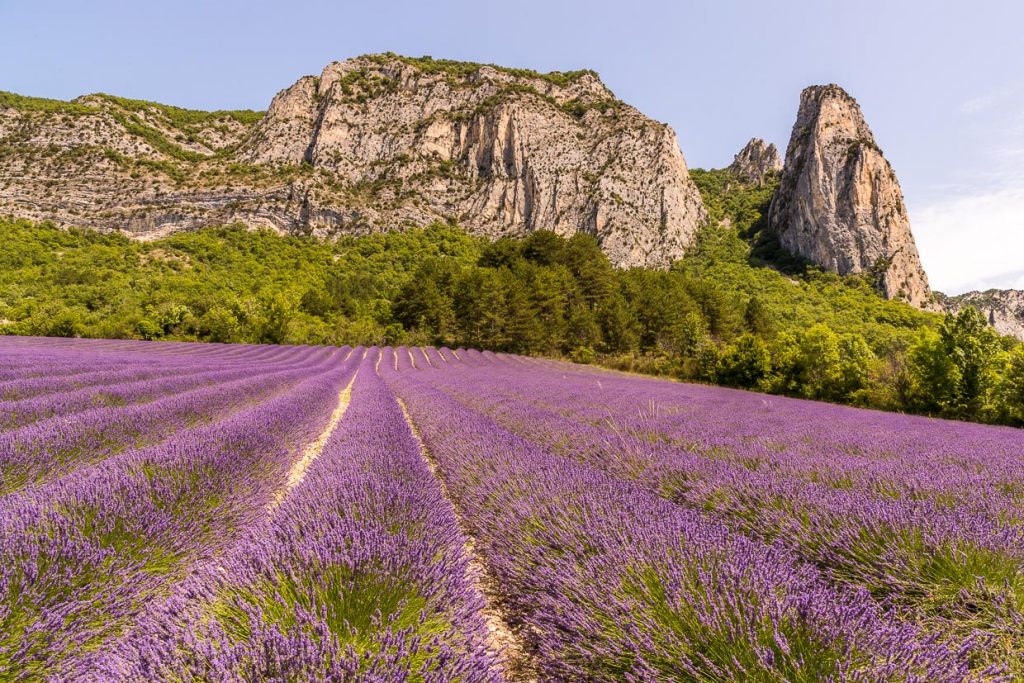
The route of the lavender
The allure of blooming lavender fields is as old as the Route Nationale 7 long. But there is the dream in purple even before the legendary RN 7 reaches Nice and other places of longing on the Cote d’Azur. Simply leave at the height of Valence coming from the north. Valence is the capital in the department Drôme and is also called the northernmost gate to Provence. You are now in the Auvergne-Rhone-Alpes region, but not yet in Provence. Confusingly, the region that borders the “real” Provence and the Alps is also called Drôme Provençale. Enough of the geographical confusion. The fact is, once here, the first lavender fields are not far away. Flowering in Drôme Provençale begins at the end of June and continues until early August.
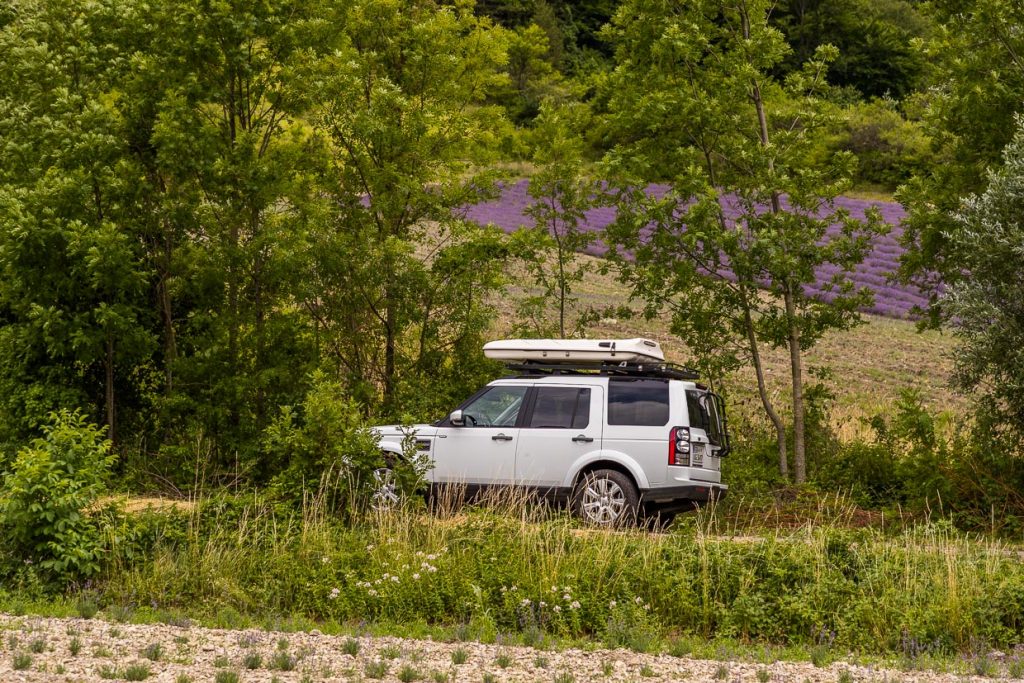
Not all lavender is the same
In the Drôme Provençale, too, people know about the attraction of lavender. There are several routes that can be taken by car or bicycle during the flowering months. In a region where lavender is grown not only for cooking, but also for medicinal purposes and as a fragrance for industry, you will often come across the brightly colored lavandin. Three different types of lavender grow in Drôme Provençale.
The “Lavande fine” also called real lavender or Lavandula Angustifolia grows from an altitude of 400 meters. It is highly sought after for the production of high quality lavender oil and is also used for medicinal purposes. “Lavande Aspic” also known as Speik lavender or Lavandula Latifolia can be recognized by its broad leaves and long flower stalks. It is a type of lavender of particularly large growth, very strong fragrance and antibacterial effect. The Speik lavender, just like the real lavender, is considered a medicinal plant and protects against parasites and insects. Because of these properties, it is used in the production of soaps.
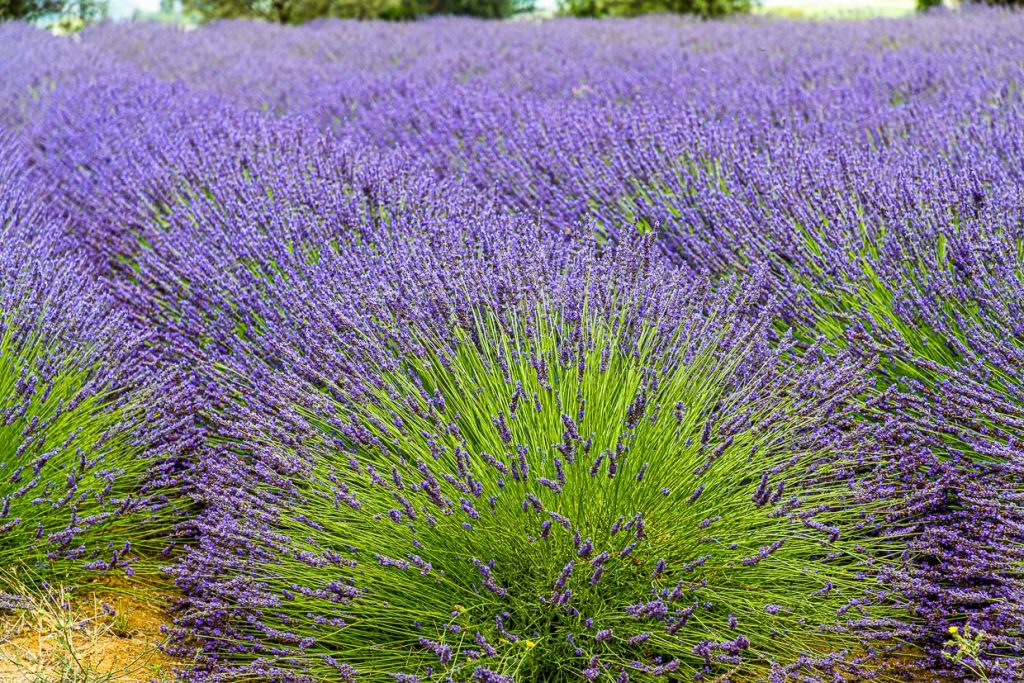
“Lavandin” Lavandula X Super is the final product resulting from the pollination of true and spike lavender. This natural hybrid can be found at low altitudes, making it perfect for mass cultivation. It grows into spherical bushes. Lavandin is mainly used for cosmetics and perfume production. The large fields known from Provence are mostly lavandin. It is more robust and less expensive than the true lavender.
Wild lavender
Around Nyons on a total distance of 142 kilometers you get a very good impression of the region. You should keep your eyes open for the picturesque mountain villages, the villages perches. The weekly markets, the gorges and rock formations of the Vercors mountains and of course the lavender fields. Besides the three cultivars of lavender, there is also wild lavender in the mountains and here especially on the high plateaus. Its flowering starts a little later due to the altitude. The flower panicles are small and close together, the scent is very intense. For your own use it is allowed to cut lavender flowers. The flowers of wild lavender are very good for cooking and baking, both fresh and dried. Click here for the Route de Lavande.

Herbs of Provence
Herbs do not stop at provincial borders. So, of course, the herbs that go into the famous herb mixture also grow in the Drôme Provençale. But what are the components of Herbes de Provence? The vague answer to this is: it depends on the region. Depending on what grows wild in the area, that can be found in the famous spice blend. There are countless variations and family recipes, because Herbes de Provence is not a protected designation of origin. In Drôme Provençale, the basic ingredients of the spice blend are oregano, thyme, rosemary and basil. Variations are also made with bay leaf, fennel seed, savory and, of course, lavender.
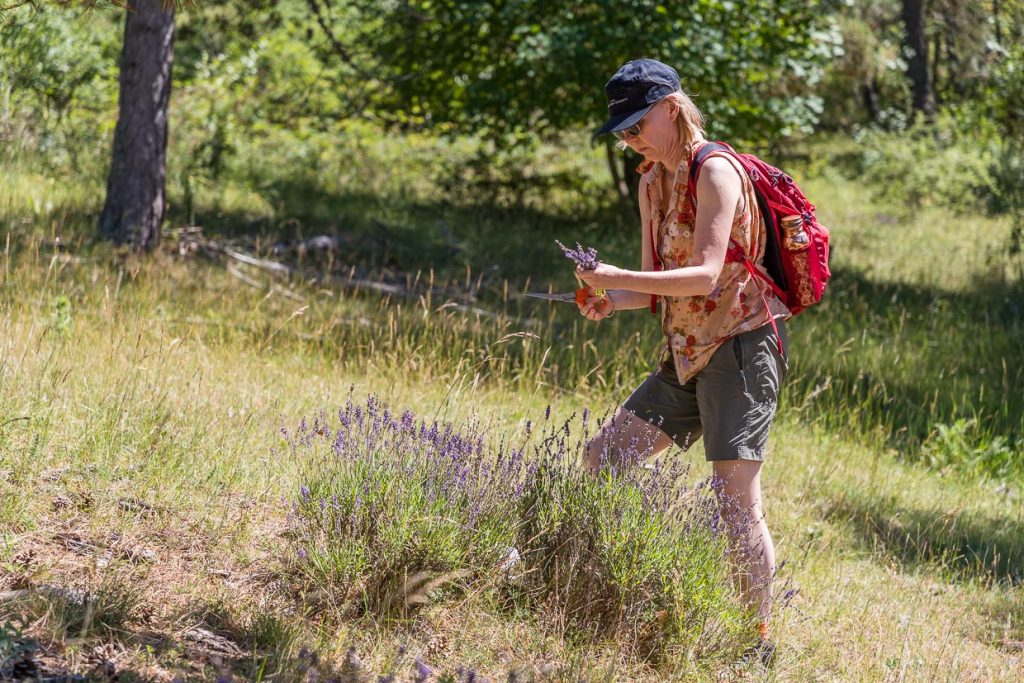
The valley of the Drôme is not only purple
The Drôme Valley is rich in culinary specialties. Before talking about the fine aroma of lavender, some products of the region should be mentioned. The black olives from Nyons can be found at every weekly market and in the small organic markets. In this region, the inhabitants have made a strong commitment to their local and organic local supply. Even the smallest village has a weekly market, there are small organic markets with local fruits, vegetables and cheese products like Picondon, a small round goat cheese. Nectarines, apricots and peaches taste incomparably aromatic. Garlic, with a light purple hue, has a high sugar content for garlic and tastes great. There is nougat from Montélimar and the sparkling wine Clairette de Die. The large supermarket chains, which with their huge assortment make life difficult for local merchants everywhere in the country, are rarely found in this region. It is better not to look for them at all, but to turn to the regional and local producers and enjoy the extremely high-quality, fresh and unpackaged products. It sounds old-fashioned and at the same time it is a concept for the future, which is lived in the valley of the Drome.
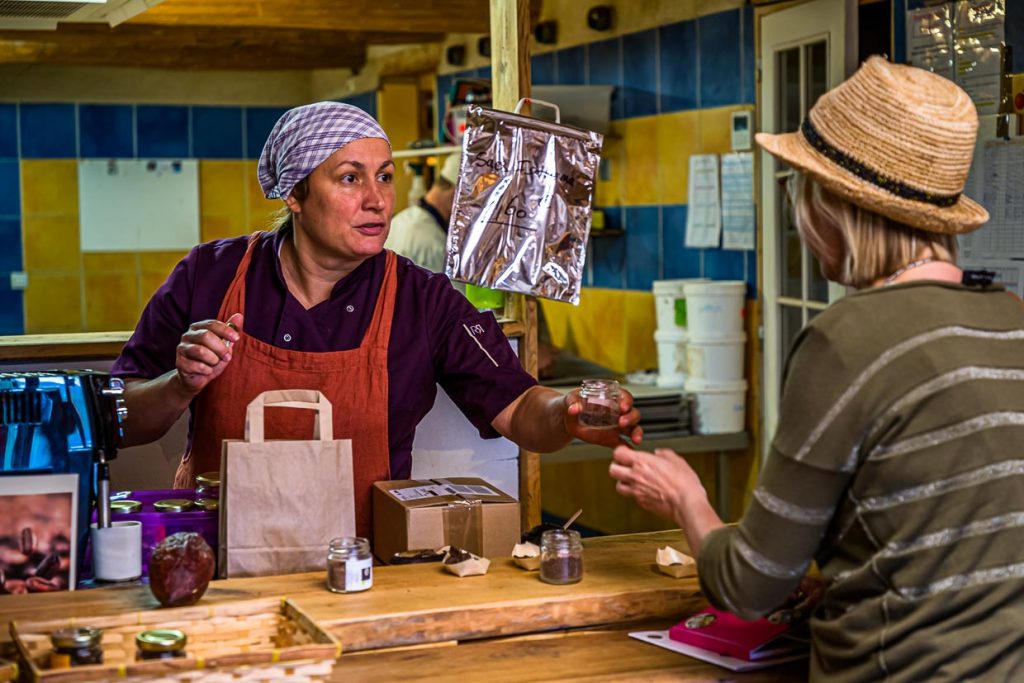
The Frigoulette chocolate manufactory is located in the village of Beaufort-sur-Gervanne in the middle of the Vercors Nature Park. A winding road leads out of the village towards Frigoulette. Here, no animal fats such as milk, cream or butter are processed. Palm oil is also not used. Instead, pralines and chocolates have a cocoa content of 68 percent and only cocoa butter is processed. Many products can be tasted at the counter with a view into the manufactory. There are cooking chocolates with the aroma of lavender, thyme or mint, as well as chocolate bars with lavender oil. Why the founder of Frigoulette Bernhard Xueref works exclusively with cocoa beans from Sao Tomé is told in our report about Chocolaterie Frigoulette.
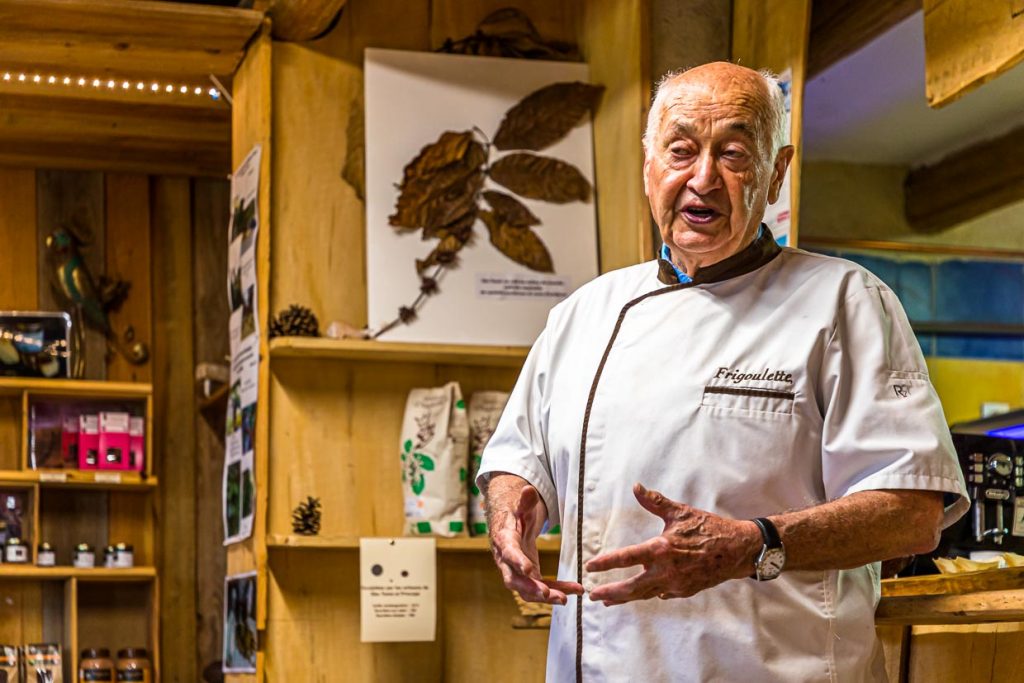
Lavender in the kitchen
Working with flowers and blossoms sounds somewhat unusual to German palates. In French, Italian and even English cuisine, however, lavender appears frequently as a spice. The dried or fresh flowers are simply sprinkled over hearty dishes or salads. From the dried flowers, the essential oils can be kissed awake by grinding them together with some salt in a mortar and then using them immediately for seasoning. Adding a few dried and freshly ground blossoms to cake batter, for example for a seasonal fruit cake with plums or apples, and sprinkling a few blossoms on top of the hot fruit, gives the cake a special scent in the truest sense of the word.
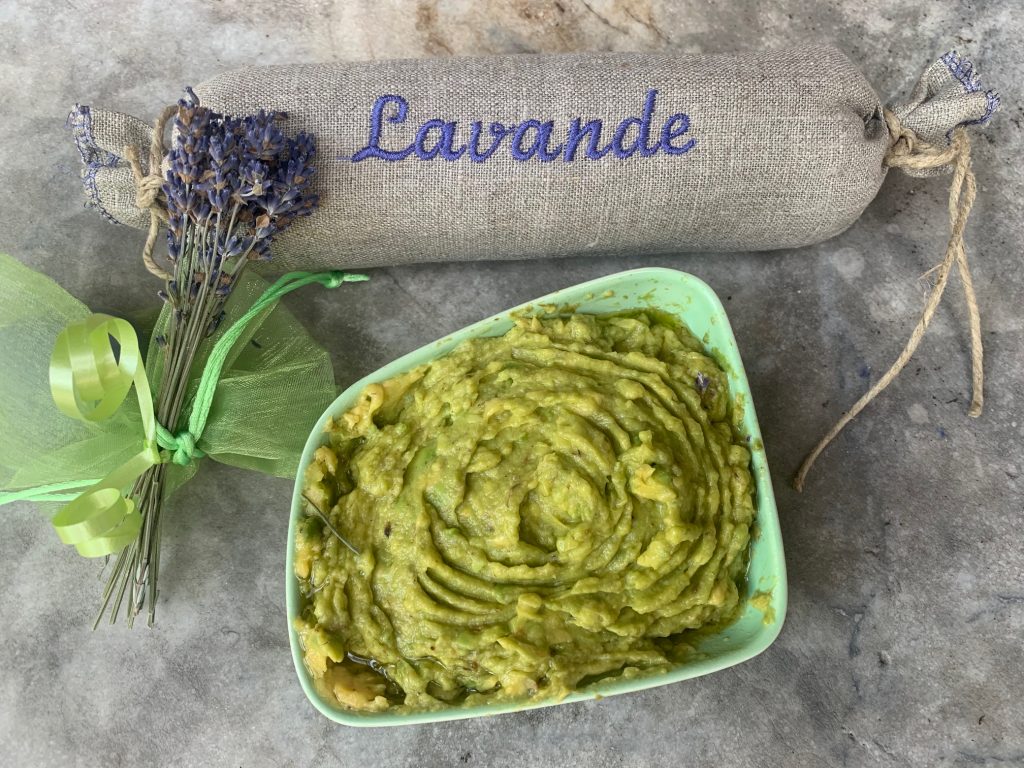
New fragrances with lavender
In the aroma kitchen, lavender is also used in the form of lavender salt, lavender sugar, lavender oil or lavender essential oil. As a small guide to the use of lavender, its “aromamtic proximity” to rosemary serves. Where recipes use rosemary, you can simply use lavender. In most recipes, real lavender, i.e. Lavandula angustifolia, is used. The smell is a good way to find out if you like the variety. True lavender is a bit sweeter than lavandin, whose smell is a bit reminiscent of camphor and therefore not suitable for consumption. As a spice, you should only use lavender grown organically, wild lavender or from your own garden. Lavender from the garden center is often treated and not suitable for consumption. But after just one year in your own garden, pesticide or herbicide residues are gone and you can use flowers and young leaves for cooking.
The accommodation costs in the valley of the Drôme were covered by the tourist office

